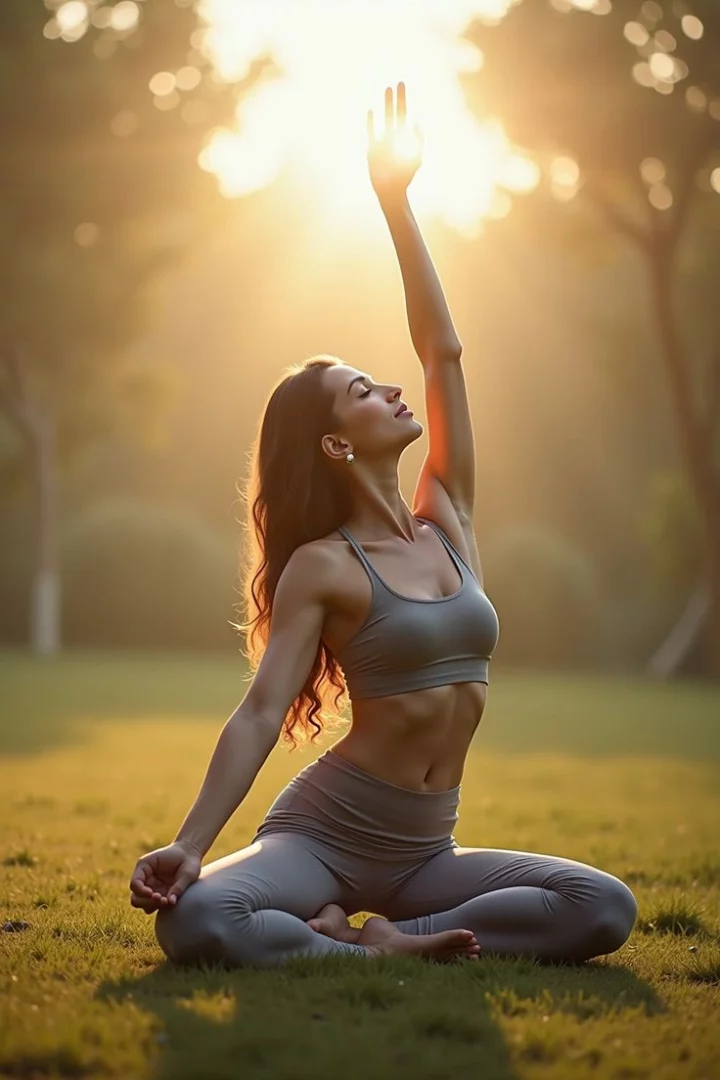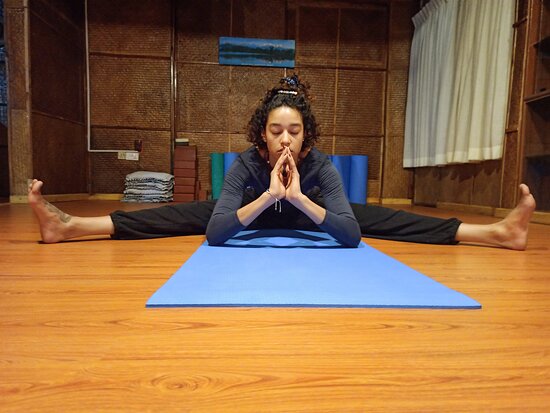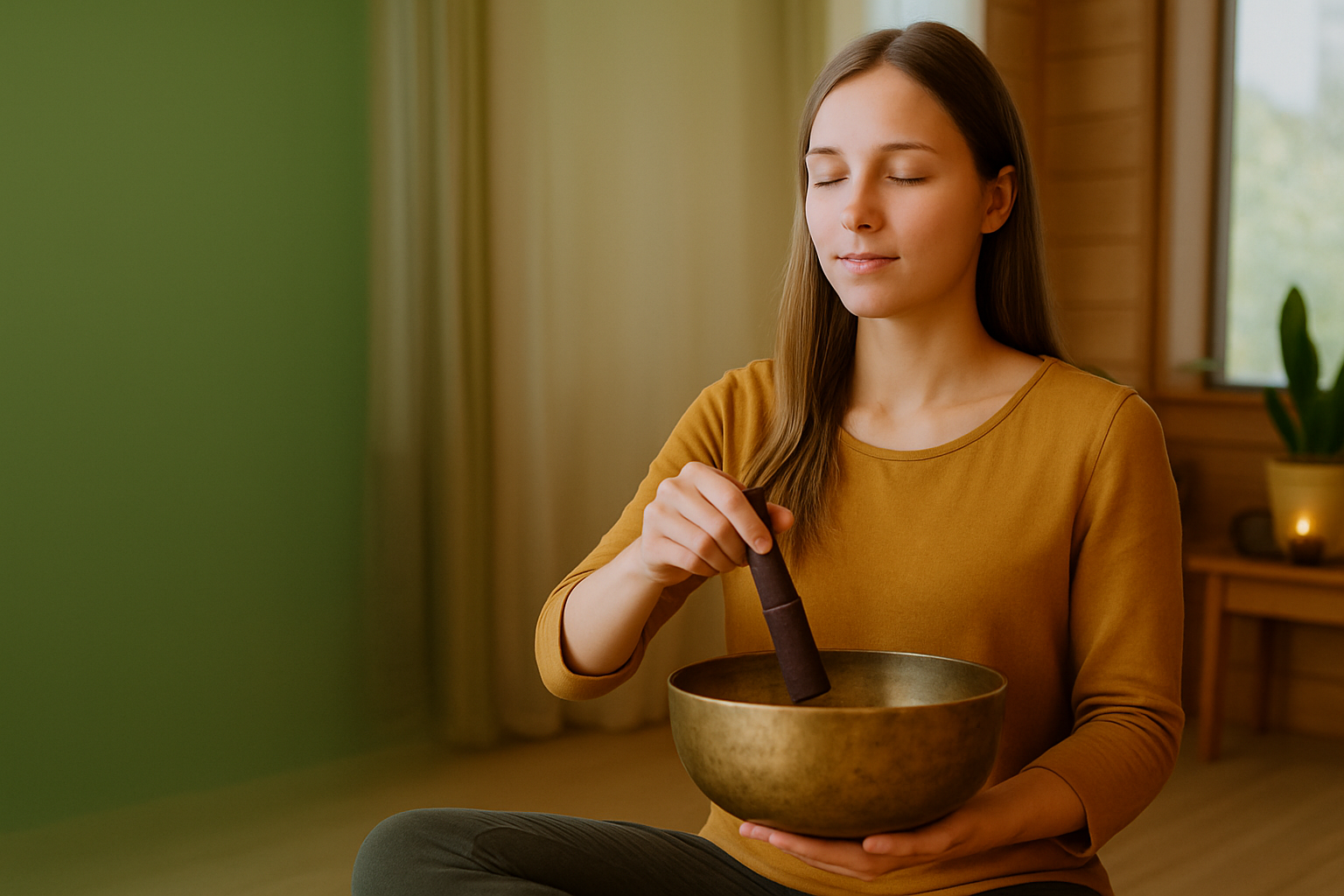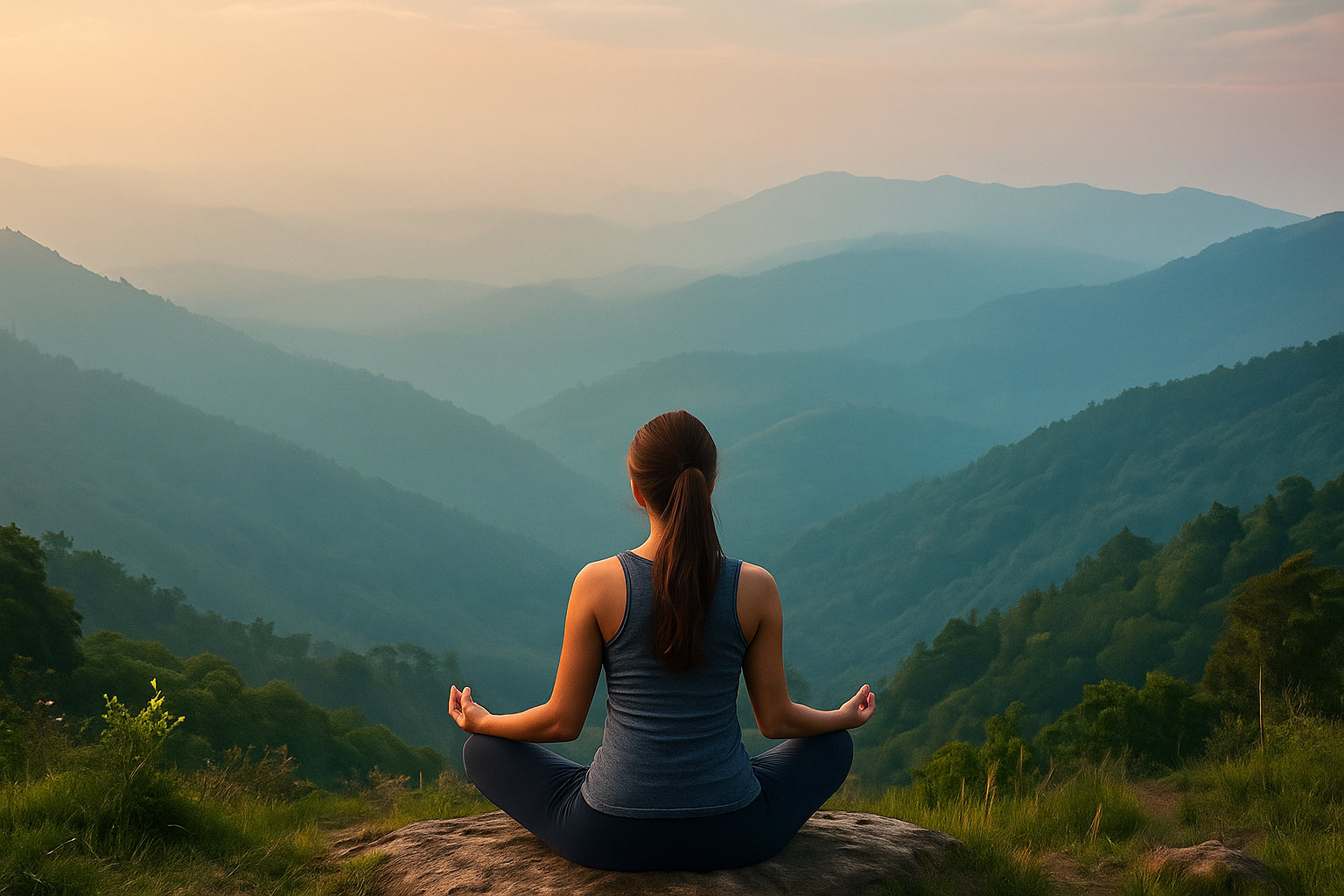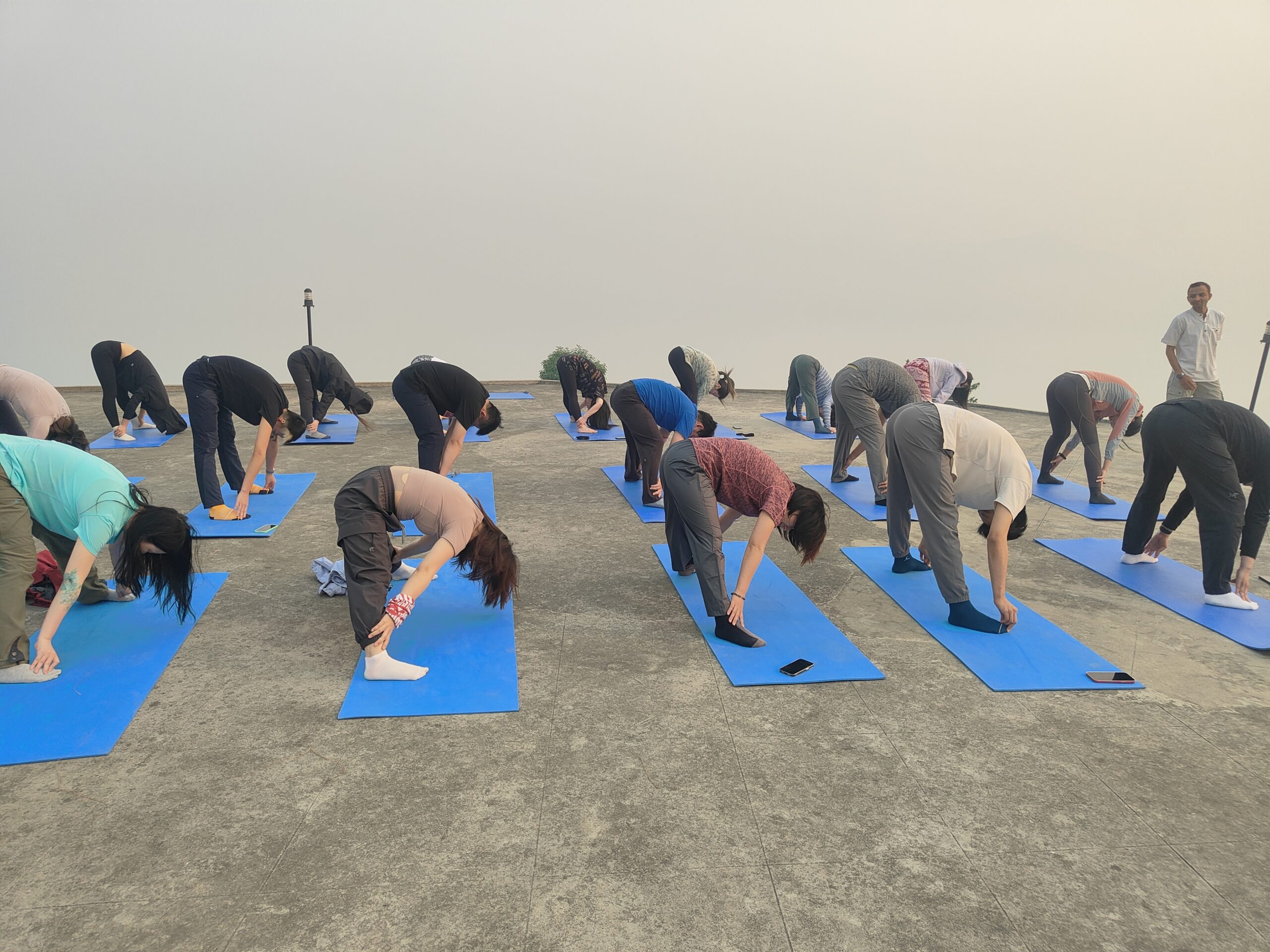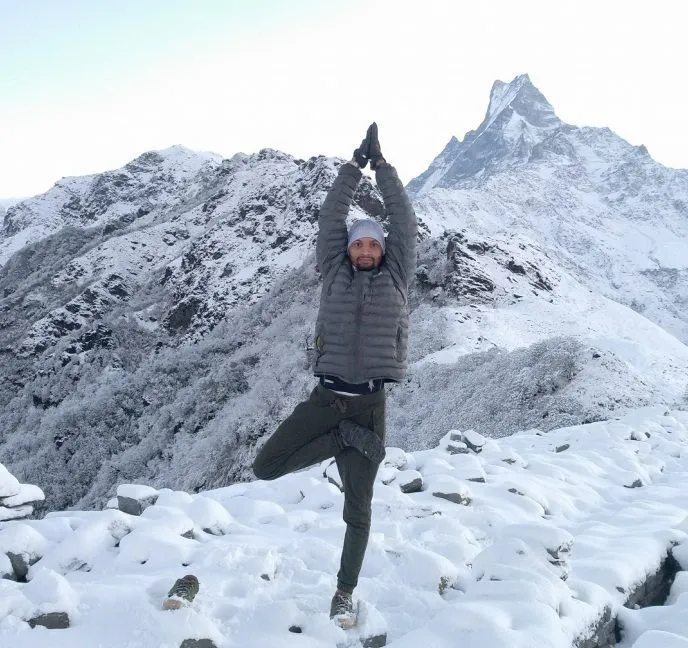Stepping upon a yoga mat for the first time, or even the hundredth, introduces you to a large and diverse universe. With the worldwide yoga market expected to grow to $200 billion by 2030, the variety of styles, beliefs, and classes available can be both thrilling and overwhelming. Hatha and Vinyasa yoga are among the most popular classes offered in studios across the world. Despite having a same heritage and many of the same postures, their approach, tempo, and experience are vastly different. Choosing between them isn’t about deciding which is “better,” but about determining which style best fits your unique goals, energy, and expectations from your practice. This guide will illuminate the distinct paths of Hatha and Vinyasa, helping you make an informed choice that enriches your unique yoga journey.
The Ever-Evolving Yoga Journey: Finding Your Path
Navigating the World of Yoga Styles
Understanding that yoga is not a one-size-fits-all practice is the first step toward embracing it. Ashtanga, Iyengar, Bikram, Yin, and Restorative yoga styles all provide a unique perspective on the relationship between mind, body, and breath. Hatha and Vinyasa are two of the most accessible and popular fundamental techniques, frequently leading to a deeper, lifetime practice. Their contrasts in movement and thought are an excellent beginning point for understanding how diverse the modern yoga environment is.
Why Understanding Hatha and Vinyasa is Crucial for Your Practice
Choosing the correct class might mean the difference between feeling energized and disappointed. If you want a strong, heart-pumping workout but end up in a quiet, meditative Hatha session, you may feel unsatisfied. In contrast, if your goal is to de-stress and methodically learn alignment, attending a fast-paced Vinyasa class may leave you feeling disoriented or overwhelmed. Understanding the fundamental difference between these two techniques allows you to choose a practice that meets you where you are and supports your individual goals for physical and emotional well-being.
Decoding Hatha Yoga: The Path of Stillness and Foundation
What is Hatha Yoga? A Historical and Philosophical Overview
Historically, “Hatha yoga” has been used to refer to any physical kind of yoga. The word “Hatha” is Sanskrit, with “Ha” denoting the sun and “Tha” the moon. Thus, Hatha yoga is the practice of harmonizing these opposing energies in order to achieve physical and mental peace. In the modern studio, however, a class branded “Hatha” usually refers to a slow-paced and foundational practice that focuses on holding static poses to establish a strong base.
Key Characteristics of Hatha Practice
Hatha yoga’s defining feature is its relaxed tempo. Hatha, unlike more dynamic types, focuses on holding each posture (asana) for several breaths. This extended length enables practitioners to investigate the complexities of posture, engage muscles isometrically, and delve deeper into stretches. Transitions between poses are intentional and focused, with pauses to allow for reflection and body awareness. The emphasis is on stability and substance over pace and sequencing.
A Typical Hatha Class Experience
A Hatha lesson typically starts with gentle warm-ups and centering breathwork (pranayama). The instructor will then lead you through a sequence of fundamental postures, providing specific cues for optimal alignment and technique. Expect to hold poses like Warrior II or Triangle Pose for 30 seconds to a minute or more. The whole ambiance is calm, quiet, and meditative, making it an ideal setting for novices to learn the basic shapes of yoga without feeling pressured.
Core Benefits of Hatha Yoga
The intentional nature of Hatha yoga provides tremendous benefits. Longer holds are ideal for building flexibility and joint mobility. This technique encourages a strong feeling of bodily awareness and proprioception. Focusing on alignment helps rectify postural abnormalities and increase functional strength. Mentally, the slower pace relaxes the nervous system, decreases stress, and promotes awareness and sustained focus. It’s an exercise for developing patience and presence.
Illustrative Hatha Asanas (Examples of Poses Often Held Longer)
- Trikonasana (Triangle Pose): Held to lengthen the hamstrings and spine while focusing on grounding through the feet and opening the chest.
- Virabhadrasana II (Warrior II): Maintained to build strength and stamina in the legs and core, while refining shoulder and hip alignment.
- Vrksasana (Tree Pose): Held to cultivate balance, stability, and unwavering mental focus.
Unpacking Vinyasa Yoga: The Dynamic Dance of Breath and Flow
What is Vinyasa Yoga? Synchronizing Movement with Breath
Vinyasa, a Sanskrit word that means “to place in a special way,” is a type of yoga distinguished by the seamless synchronization of movement and breath. Each movement is purposefully connected to an inhalation or exhalation, resulting in a continuous, dance-like flow. This technique evolved from the more organized Ashtanga yoga tradition and is renowned for its energy and inventive sequences. It is particularly popular in Australia, where 61% of yoga sessions are Vinyasa or a similarly flowing Yin form.
Key Characteristics of Vinyasa Practice
Breath-synchronized movement is central to Vinyasa. An inhale may boost you into a posture, whilst an expiration moves you to the next. This results in a flowing, energetic exercise that frequently resembles a moving meditation. Vinyasa classes are noted for their diversity; no two classes are same since teachers have the creative freedom to develop unique sequences. The speed is usually faster than Hatha, which generates internal heat and presents a cardiovascular challenge.
A Typical Vinyasa Class Experience
A Vinyasa session often begins with several rounds of Sun Salutations (Surya Namaskar) to warm up the body and create the link between breath and movement. The lesson then goes through a number of flowing sequences that increase in intensity and difficulty. Music is frequently used to compliment the rhythm of the flow. While alignment signals are provided, the emphasis is on sustaining continuous movement, which requires a different level of concentration than Hatha. This practice usually concludes with cooling postures and a final rest in Savasana.
Core Benefits of Vinyasa Yoga
Vinyasa yoga’s dynamic nature provides a challenging workout that improves cardiovascular health and builds lean muscle strength throughout the body. Constant movement improves stamina and endurance. Mentally, the concentration necessary to connect breath and movement can generate a “flow state,” a meditative state in which the mind becomes clear and totally present, reducing internal chatter. This makes it a useful tool for reducing stress and anxiety.
Illustrative Vinyasa Asana Transitions (Examples of Linked Poses)
- Chaturanga to Upward-Facing Dog to Downward-Facing Dog: This classic Vinyasa transition is powered by breath: exhale to lower into Chaturanga, inhale to open the chest in Upward-Facing Dog, and exhale to press back into Downward-Facing Dog.
- Warrior I to Warrior II: A fluid transition where an inhale might establish Warrior I, and an exhale opens the hips and arms into Warrior II, all within a single, graceful movement.
Hatha vs. Vinyasa: A Deeper Dive into the Differences
Pace and Movement: Stillness vs. Flow
The most major difference is here. Hatha is defined by its calmness. You enter a pose and stay there, allowing your body and mind to relax into the shape. The value is located in the hold. In contrast, Vinyasa is defined by its flow. The value is in the natural transition from one posture to the next, resulting in a seamless connection powered by the rhythm of your breath. One is a collection of discrete images, whilst the other is a continuous film.
Intensity and Physical Challenge: Building Strength Differently
Both approaches build strength, but in different ways. Hatha develops isometric strength and endurance through sustained holds that require muscles to remain engaged over time. Vinyasa develops dynamic strength through continuous movement and repetition, which frequently necessitates more muscular power to govern transitions and support body weight, resulting in a more intense cardiovascular workout.
Breathwork (Pranayama) Focus: Distinct Approaches
Hatha yoga uses the breath as an anchor within a static pose. You concentrate on deep, steady breathing to relax the nervous system and deepen the stretch. The breath helps to maintain the stillness. Vinyasa relies on the breath as its driving force. Every inhale and exhale is a cue to move, transforming the breath into an active, propelling force that sets the speed and rhythm of the entire exercise.
Approach to Alignment: Time for Refinement vs. Foundational Understanding
Hatha’s slow pace allows for careful alignment. Instructors can provide thorough corrections, while practitioners can perform micro-movements to discover the best expression of a pose. Vinyasa relies on a more intuitive, fundamental understanding of alignment, as the faster speed does not allow for the same level of fine-tuning in each specific posture.
Mental Engagement and Mindfulness: Two Paths to Awareness
Both activities are effective methods for developing mindfulness, but they approach it in different ways. Hatha encourages peaceful, observational awareness, in which you become aware of subtle bodily sensations and mental shifts during moments of silence. Vinyasa promotes dynamic, concentrated mindfulness, in which the concentration necessary to sync breath with complicated movements leaves little opportunity for distracting ideas, resulting in active meditation.
Which Style Suits YOUR Practice Best? A Personalized Guide
Identifying Your Personal Goals and Intentions for Your Yoga Journey
Your “why” is the most crucial consideration. Are you looking for stress relief? With 54% of yogis practicing to relieve stress, both techniques are helpful, but Hatha’s relaxing characteristic may be more direct. Is it your goal to increase cardiovascular fitness and strength? Vinyasa is the obvious choice. If you want to enhance your flexibility and understand the principles of yoga with exact alignment, start with Hatha.
Considering Your Current Physical Capabilities and Energy Levels
Be open about your body’s requirements. If you are new to yoga, recuperating from an injury, or have low energy levels, Hatha offers a safe and supportive atmosphere to lay the groundwork. If you are already active, have high body awareness, and enjoy a physical challenge, you will most likely thrive in a Vinyasa session.
Your Preferred Pace and Learning Style
Do you prefer to study methodically, step by step? Hatha’s steady tempo will entice you. Do you enjoy a more intuitive, fast-paced workplace where you can learn by doing and go with the flow? Vinyasa is better suited to your style. Consider whether you prefer a calm, thoughtful setting or a more upbeat, music-driven one.
The Evolving Nature of Your Yoga Journey
Your needs will alter. Some days, you might need the exhilarating flow of Vinyasa, while others, your body and mind may require the grounding calm of Hatha. Yoga’s beauty lies in its versatility. With the online yoga market expected to reach $10.89 billion by 2023, it’s easier than ever to try new styles and tailor your practice to your specific needs.
The Crucial Role of the Teacher and Class Environment
Ultimately, the quality of the instructor may be more essential than the style itself. A proficient Vinyasa teacher can provide great alignment signals, while a creative Hatha teacher can create sequences that flow seamlessly. Visit multiple studios, meet with different teachers, and locate an environment in which you feel encouraged, safe, and inspired.
Beyond the Binary: Embracing a Holistic Yoga Practice
The Benefits of Cross-Training: Why Both Styles Have Value
Viewing Hatha and Vinyasa as opposing energies is restrictive. They are complimentary. Hatha’s alignment expertise and patience can greatly benefit a focused Vinyasa practice. Similarly, a frequent Hatha practitioner might benefit from the cardiovascular conditioning and dynamic strength gained by Vinyasa. Integrating both into your routine provides a more balanced, holistic approach to yoga, promoting overall strength, flexibility, and awareness.
Conclusion
The choice between Hatha and Vinyasa yoga is not a definitive decision, but rather the beginning of an ever-changing journey. Hatha yoga provides a path of quiet, foundation, and deep physical awareness, making it an ideal starting point for beginners and a grounding practice for practitioners of all levels. Vinyasa is a dynamic flow practice that connects breath and movement to generate strength, stamina, and a meditative state of presence.
Experimenting with both styles is the best way to determine which one best matches your practice. Try a beginner Hatha session to learn the fundamental poses, followed by a basic Vinyasa class to feel the flow. Pay close attention to how your body reacts and how your mind feels during and after each session. Your ideal path may require committing to one method, or it may be a hybrid of the two, responding to the changing needs of your body and life. Ultimately, the best yoga for you is the one that keeps you coming back to your mat.

